Review: New Horizon GD 2.25 Turntable- So the turntable of the Italian brand New Horizon that Hifilive magazine has put at my disposal for this review has been doubly well received. First because it has given me a task during confinement and second because it has provided me with another escape route from these four walls, at least with the spirit. But let’s leave the philosophical aspects and get into flour.
New Horizon is a new Italian company based in Todi, a town in the province of Perugia, halfway between Florence and Rome. Founded at the end of 2016, its mission is to manufacture turntables and accessories with “quality, beauty and reliability” at an affordable price and with “Made in Italy” as a source of inspiration and guarantee sign.
Thus, in their catalog they have eight models of turntables, an external speed controller, a clamper, a set of reinforced legs, an adapter for 45s, spacers to regulate the VTA, a high precision ceramic ball to update the turntable shaft as well. like other enhancements and add-ons.
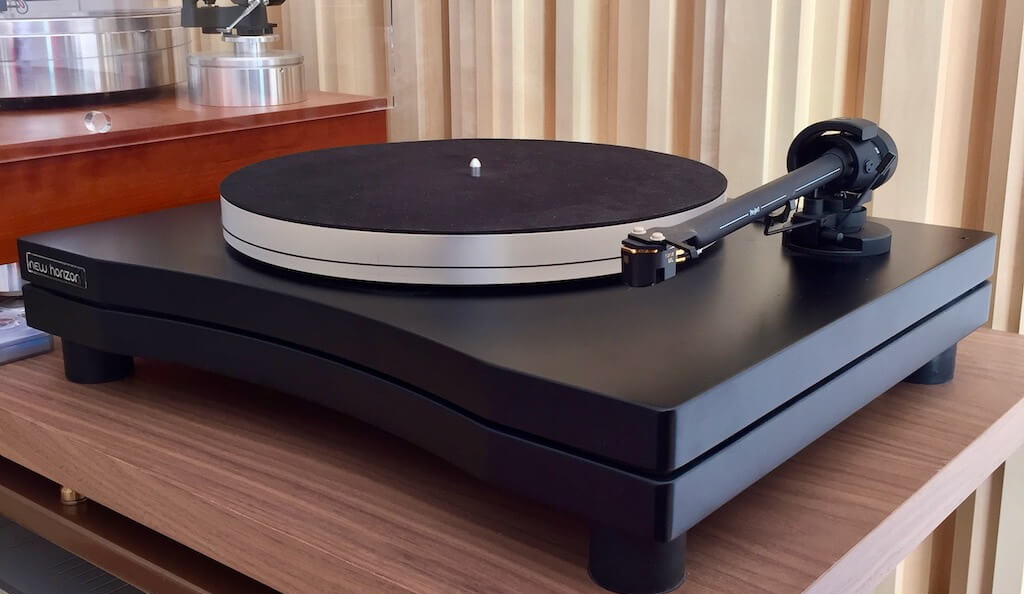
The turntable object of this review is the New Horizon GD 2.25 which is a simplified version and cheaper than the top of the GD 3 range. It seeks to offer a similar performance to its older brother while maintaining as much as possible its sound qualities of detail and level of silence at a more affordable price. To do this, reduce the number of sockets from three to two. Both skirting boards of the same thickness made from a mixture of compressed wood pulp and artificial resins, known as HD MDF. This material is very smooth and quite heavy. Its isomorphic composition makes it more predictable and consistent than if solid wood were used. The use of several independent sockets allows a more efficient decoupling of the motor with the arm and the needle. While the turntable spindle and arm are mounted in the upper socket, the motor is installed in the lower socket. This prevents the motor from transferring noise to the shaft and arm. Both skirting boards are joined by a bituminous material that cushions and decouples the base.
The platter is 2.5 cm thick and is made of laser cut transparent methacrylate and finished on a high precision lathe. I must add that the photos do not do it justice and that it is not only beautiful but it is manufactured with great care.
The motor is 24 volt synchronous type and has an external switch mode power supply. The high torque and rotation speed of 500 rpm actively contribute to the regularity and fluidity of the platter rotation. The motor is isolated by an exclusive mechanical suspension system made up of precision steel springs calibrated on the suspended weight of the motor and the pulley. Thus the transmission of the oscillation to the socket is blocked efficiently.
The drive belt is made of silicone rubber. According to the manufacturer it is ideal to guarantee the transmission of force and the decoupling of vibrations simultaneously. Motor, belt and platter make the turntable at both 33.33 and 45 revolutions per minute reach its optimum turning speed in a few seconds. Something very appreciated when listening to single tracks or singles and changing a lot of vinyl.
The axis of rotation is fitted with an inverted bearing composed of three aluminum and steel parts in order to guarantee maximum “silence” and very low rotational friction. It looks flawless, and you can see excellent precision engineering work on a reasonable budget.
The connection terminals are gold-plated RCA type and, as it cannot be otherwise, it has its corresponding ground connection.
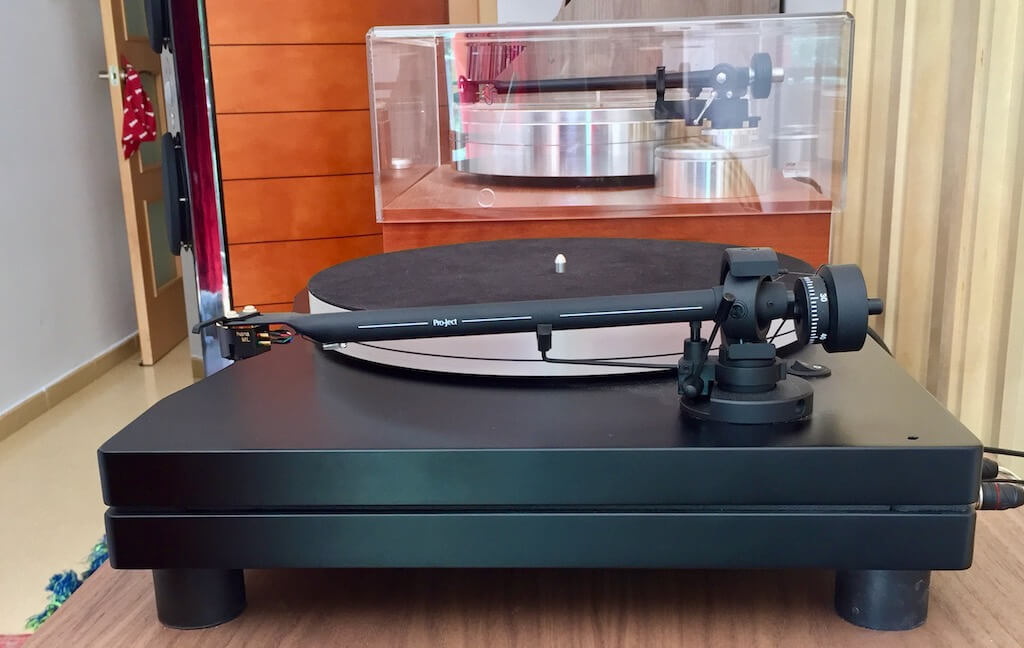
The arm that mounts the turntable is from the Austrian brand Project. A 9 inch matte black straight OEM arm based on an aluminum drum double gimbal. Allows adjustment of Anti-skating, Azimuth, VTA and VTF. It is a simple arm to calibrate and very intuitive. It gives much more game and sound than its sober appearance suggests.
The turntable sits on four rubbery material supports and allows them to be adjusted in height for leveling. The stands are perhaps the least glamorous and aesthetic of the turntable, although they are also, except for the rear connection panel, the least exposed to the eye of the device. However, on the New Horizon website we are presented with the possibility of updating the legs with other technically and aesthetically superior ones, with a chrome that seems very elegant and attractive.
The turntable has dimensions of 450 x 365 x 165 mm and can be chosen in two finishes: Matte Black or White. At almost 11 kilos it is not a 35 kilos anvil like my Acoustic Solid but it behaves like a heavy weight in terms of sound quality.
Includes the following accessories:
- RCA interconnect cables
- External 24 VAC / 500 mA laptop-type power supply
- Methacrylate dust cover
- Owner’s manual
- Capsule Installation Reference Template
- Anti-skating weight, 3 x arm weights
- Arm specific installation tools
Although it should be noted that the methacrylate cover, which is supplied in a separate box, has not been finally delivered for the review, although it is something that does not affect the evaluation of the sound of the device.
As the turntable does not include a pickup capsule, the AudioÉlite importer has been kind enough to install a brand new Hana ML, a detail that I greatly appreciate.
New Horizon GD 2.25 Turntable – SOUND
After installing the turntable, checking the capsule settings, and letting it loosen for about a hundred hours of use, it’s time for critical listening.
Jazz: Miles Davis – Porgy & Bess (Mobile Fidelity 45 RPM)
Porgy & Bess is for many the best album of those recorded by Miles Davis and Gil Evans and is usually a work that is not lacking in the typical lists of the best albums of all time. In the late 1950s, Miles saw Bebop and Hard-bop as too bombastic and baroque to encourage creativity, and he was looking for new forms of improvisation and musical creation in modal jazz . Almost at the same time as the premiere of the homonymous film, several creations of various styles based on George Gershwin’s opera were recorded, but none were as well received by critics as this one by Miles and Evans and none have also aged with the passage of time. of the years.
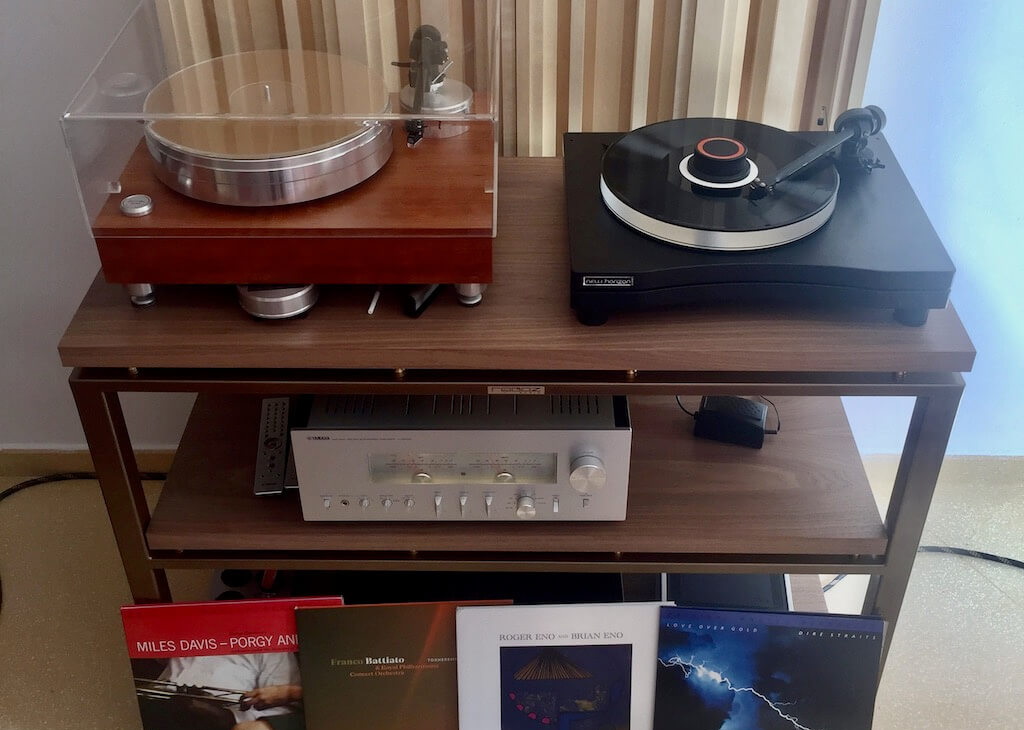
In the second cut entitled Bess, you is my woman now we have Miles to the intimate, sensual and silky fliscorn. The orchestra accompanies the star carrying him on the wings. It sounds jazz, it sounds classical, it sounds American, it sounds universal. With the integrated Yamaha A-S3000 pot at 11:00, a vital dynamic is enjoyed so that the size of the orchestra and Miles’s phrases each have the appropriate weight and seem credible to us. The turntable, the arm and the capsule are the other orchestra that does its job with plenty of efficiency.
The third cut entitled Gone starts, which is the only one from the album composed by Evans himself. Orchestra and drums would not sound with such claw and vivacity if it weren’t for the black background that the New Horizon GD 2.25 achieves. The dry hits that drummer Philly Joe Jones prints on the snare materialize with his fast attack without any congestion or lack of resolution. But it is in the sustained phase and the subsequent relaxation where an if not fully holographic, but very carnal sensation is achieved. It is felt that the different instruments float but not in a gaseous or blurred mode, but with their innate embodiment and essence. Well, the turntable is capable of recreating that there is a part of the sound projected directly from the instrument and another part that comes from the room where it was recorded. All this while simultaneously the brass section of the orchestra is playing the phrase that serves as the leitmotif of the cut with short and powerful notes. The turntable achieves an expansive sound, with different layers and sound planes where micro and macro dynamics coexist without any congestion. High definition sound, yes, but above all high seduction.
But of course we have an excellent work and a pristine 45-lap vinyl reissue. Let’s see how our turntable behaves with another less audiophile record.
Pop: Franco Battiato – Torneremo Ancora (Sony Music 33 RPM) on New Horizon GD 2.25
The New Horizon GD 2.25 being a product of Italy, why not feed it with a record by one of its most international and beloved artists, Franco Battiato. The Sicilian singer-songwriter, director, painter, who just turned 75, left us his sonorous testament last year, the finishing touch that closes his solid artistic career. Torneremo Ancora has 14 of his most pop songs and an unpublished one which is the one that gives the title to the album recorded with the Royal Philharmonic Orchestra.
Yes, we see that it is nothing original. Which is something that usually ends up most of the time and in the best of cases in a joke when not in a “luiscobera” degeneration. There we have the dire examples of George Michael involved in twilight crooner or the trash-metal band. Metallica with their S&M, an album that had a lot of “trash” and little or no metal, except for the juicy “metal” money that they pocketed with that mob-concert. Simply Red and even Sting are not spared from luiscobeo, (unfortunately) etcetera.
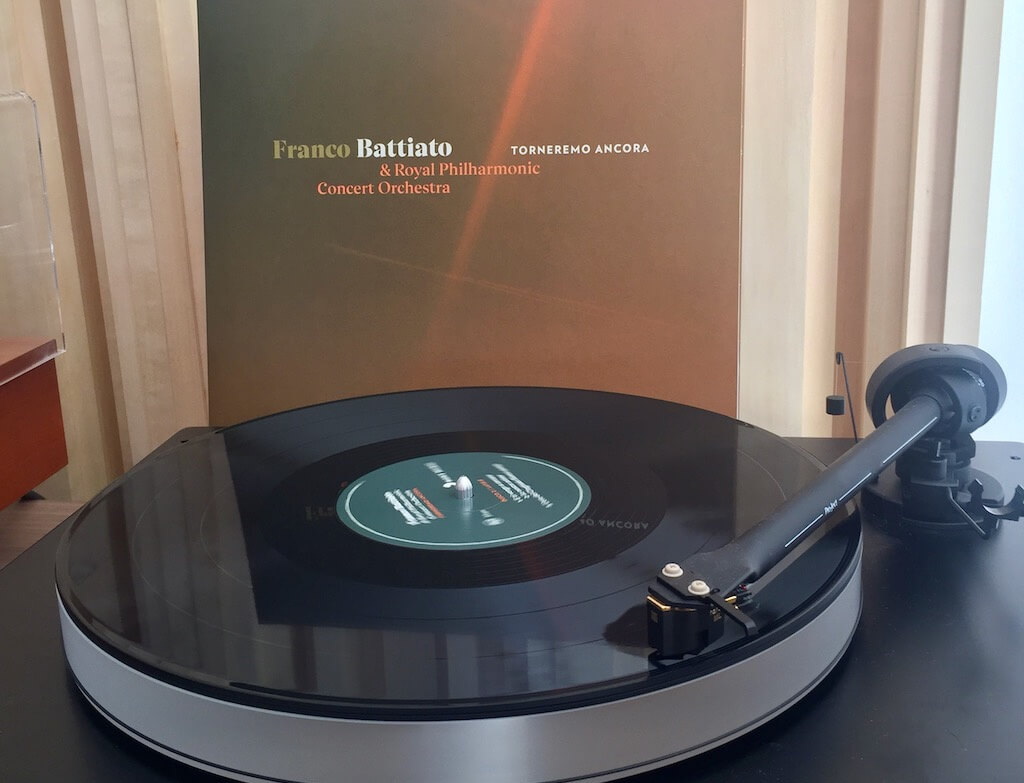
But it is that here who was behind the Italian was the Royal Philharmonic that in the end managed to convince a convalescent Battiato who had been retired from the stage for about three years due to an illness never announced to the media. If it’s not a great album, at least it remains a good album. A good album by “Il Maestro.” It’s not little.
In the first cut entitled Torneremo Ancora, the artist’s voice sounds fragile and brittle, just a thread of what it was in its fullness. However, it does not lose an iota of what makes it so great: its ability to tell stories. Battiato the minstrel, Batttiato the philosopher, Battiato the popularizer of cultural pedantry. Franco Battiato is forgiven for everything because he has always given everything even more than he touched. Being an entirely digital modern recording, the funny thing is that it doesn’t sound like (much) digitalitis, or worse still, with that modern disease of wild compression that drowns and constricts the music until it becomes an indigestible marzipan. Good work from the Italian engineer “Brian” Pino Pischetola who has respected the delicate voice of his countryman, making his defects his unfailing virtue.
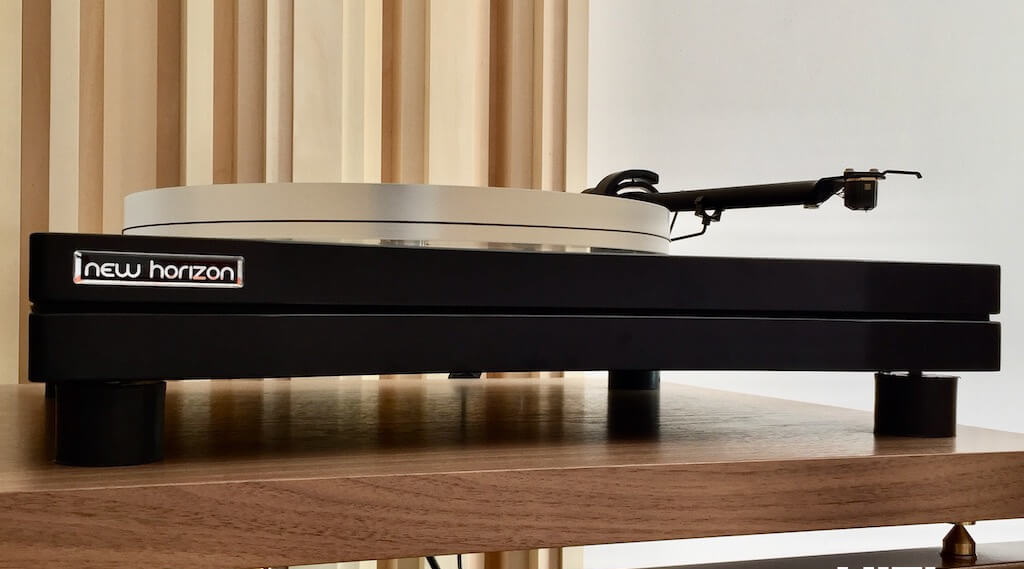
This still earthly priced turntable manages to extract substance from both old-school analog records and new recordings as long as they have been recorded with technique and care. He does such a good job with the orchestra that the instruments sound with quite the right size, weight and position, and that’s with the limitations of my room. Battiato’s voice right in the center of the scene with the pés, bés y teas, the plosive consonants that collide with the microphone, well present. This pop that every sound engineer tries to avoid in any recording here is respected, because his presence emphasizes the tired voice of the singer, it may make it less canonical but it makes it more authentic and alive. He is a 74-year-old man with a microphone in hand that tells his usual stories. The seduction of the story.
Lode all’inviolato sounds and the strings lift us higher and higher like leaves swayed by a whimsical spring whirlwind. He sings in Italian “le nuvole non possono annientare il Sole e lo sapeva bene Paganini che il diavolo è mancino e subdolo e suona il violino.”
“L’animale” whose Spanish version is the autobiography of my life (and that of so many!). A masterpiece by a singer who knows human greatness and stupidity so deeply that he allows himself to laugh in front of the mirror. I don’t think wisdom is anything other than realizing how stupid you were and suspecting you still have room to “improve” that statistic.
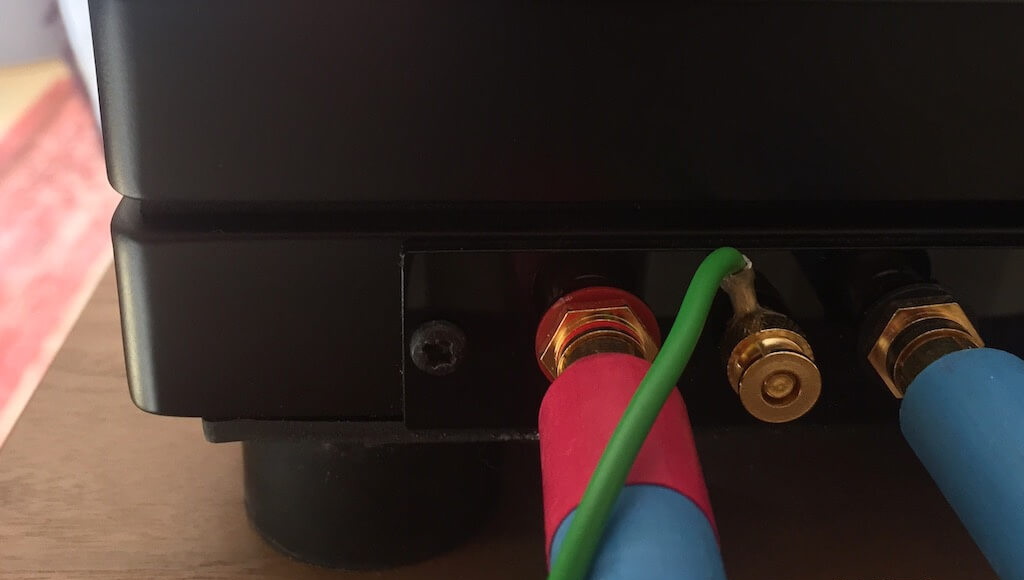
Tiepido Aprile invites us to cross a pine forest and enjoy the smell of its resin. Impossible not to get excited, impossible not to feel that one is there. At a moderate volume the music sounds not only moving but also an accomplice of the after-dinner, a friend of leisurely coffee and dark chocolate. I don’t know at this point in the review whether to label this dish a music lover or an audiophile and maybe that’s even good. Maybe it’s great to have to put the needle back at the beginning of the record because I forget I’m doing a “listen” for a review. Like a child who enjoys doing homework for the first time, a wry half smile crosses my face. Battiato’s double album is enough for a book on its own, but it is time to change the album and third.
Rock – Progressive Rock: Dire Straits – Love Over Gold (Mobile Fidelity 45 RPM) on New Horizon GD 2.25
That Mark Knopfler is a better musician, songwriter, producer – and cook if you hurry me – than a singer is something that I don’t think will allow much discussion. His voice has many limitations but he is grateful that he has never tortured us with a falsetto or that he tries to go where he does not go. But he is such a superb musician in everything else and he was surrounded by such a powerful and cohesive band that his voice is not so essential to me. It’s not that I despise her, it’s more: if I like Battiato as a singer, what am I going to ask good old Mark! But let’s say I can’t imagine to Queen without Freddie Mercury but I could imagine Dire Straits with a silent Mark Knopfler. Because instrumentally and creatively, what the British band offers is so titanic that you could enjoy it with the same intensity if it were only instrumental. Here comes this album Love Over Gold with themes so extensive that they come close to the concept of progressive rock and where the instrumental development prevails over the more pop and vocal rock. A superb work from a group in a state of grace.
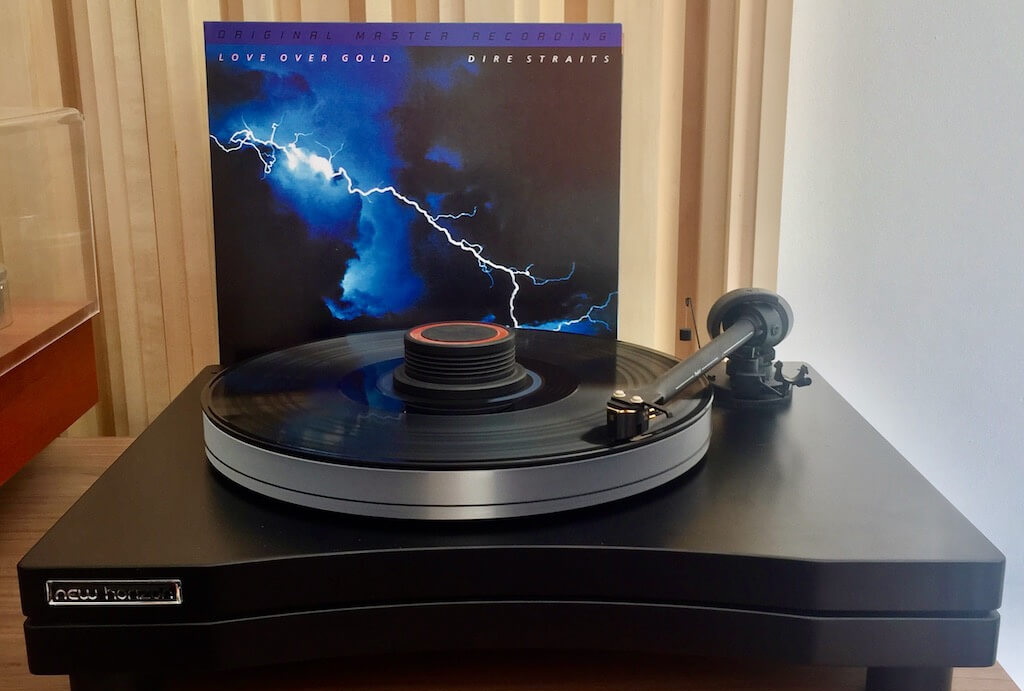
With the needle placed in the second cut entitled “Private Investigations” the guitar makes its way between a synthesizer cushion and Mark shows himself to be the master of the strings that he is, since the sound is as important as the pristine silence between notes, metrically perfect. Knopfler whispers to me like Leonard Cohen and here he conquers me, dismounts me and leaves me defenseless. How good it is to be humble and know what tools you really have. The same that is the secret of this turntable: engineering, work, budget control all in tune and without pretending to be what it does not play.
It could sometimes seem to me that the New Horizon is somewhat bland when what it sounds like is linear, without there being that vee curve that was imposed so much annoyingly many times in the eighties. The kick drum, the piano with a very successful cinemascopic reverb. The toms engulfing the stage are the culmination of a song where dramatic tension and sweetness act as fuel and oxidizer for a fire that ends up devouring everything. My music lover and audiophile hemispheres are equally full.
With “Love over gold” guitars and piano dance again on stage this time without generating any cinematographic tension. This song on the other hand wraps me up and throws me that invisible but present emotional bond. Music grabs me without my being able or willing to do anything to avoid it. The xylophone brings brightness and details with very delightful transients from the audiophile side and at the end of the song they have their moment of brilliance.
Ambient: Roger & Brian Eno – Mixing Colors (2 x LP Deutsche Grammophon) on New Horizon GD 2.25
I close the critical listening with an album recently released and with which I am therefore in the phase of prior knowledge. This is the album Mixing Color that brothers Roger and Brian Eno have released under the German label Deutsche Grammophon. A minimalist ambient single album. The word landscape in Spanish etymologically has a static connotation that makes us think of a painted canvas, a photograph that retains space and time. However, if we translate landscape into English: “Landscape” and do its dissection and translation into Spanish: escape from the land. Here we already see a dynamic connotation. We would not be before the capture of a spatial fragment but rather before the capture of a space-time fragment. Now more than a painting, it could be a movie screen, the window of a moving train. For both concepts, the Anglo-Saxon of “landscape” and the Spanish of “landscape” is what the Eno brothers have wanted to marry and capture with their music. I recommend watching the videos that are officially listed on the German label’s website and on YouTube, which have been recorded with a single lateral travelin sequence and which, like any image, explain the concept a thousand times better.
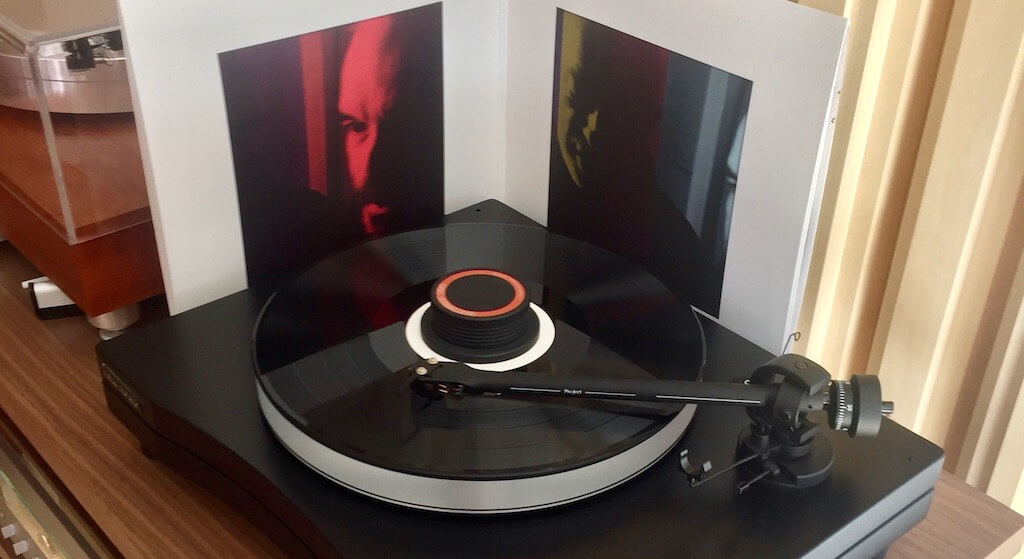
The first track “Spring Frost” sounds vaporous, with the fragility of a music box. The micro-dynamics, the timbre and the black background offered by the turntable make musical notes enjoyable and dissolve in the ear without any edges. Attack, dip, sustain, and fade are never quite the same. There is always a subtle difference, a veiled nuance. That is what makes this musical genre interesting, which allows both listening in the background while reading or meditating and active listening that allows the enjoyment of textures and sound brushstrokes. “Spring Frost” frozen spring. I just have to look out the window and see the park across the street without grandparents sunbathing, without dogs playing with a ball, without children running. Only the movement of the leaves of the trees.
The fourth track entitled “Wintergreen” is great for testing the turntable stillness. I suspect that the engine and arm decoupling system has a lot to do with the result. The notes are stretched like Perseids with a reverb that Brian Eno employs with unparalleled mastery and then dies against that pristine black background.
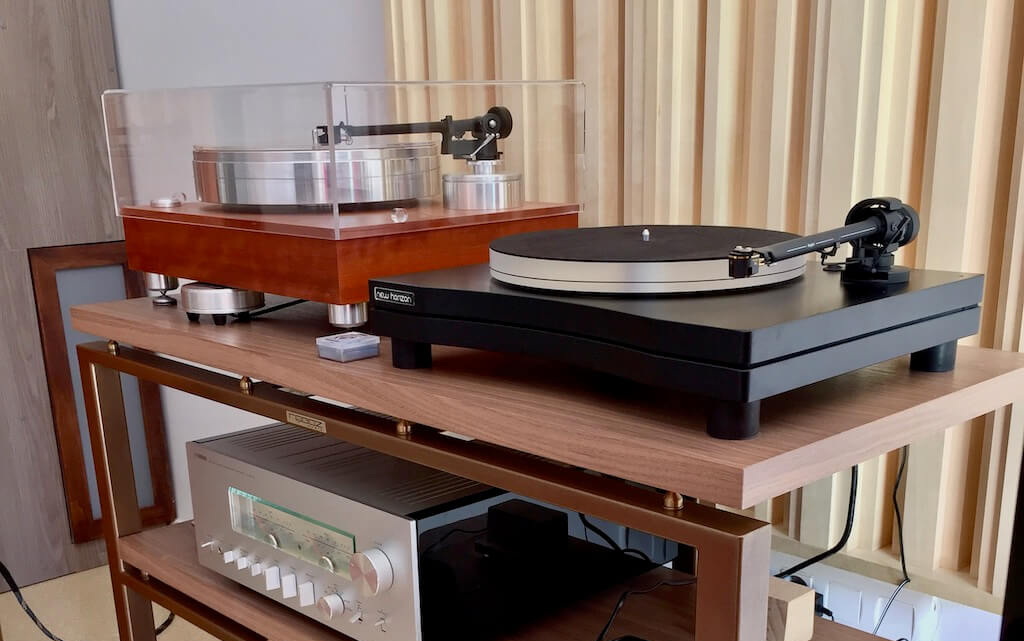
Obsidian sounds like we put an old organ under the water of a pond and listen to it from a distance. Mysterious and ceremonial. Very cinematic and with a slight anxiety that he does not bother to hide. It sounds like the calm of someone who has already cried everything that had to cry that day and finds some solace.
Blonde is like a slow motion sepia pansy. It is nostalgia without words. The rays of light that slip through the curtains at nap time on a long-gone summer Saturday. It’s the smell of your mother’s apron when your head reached her waist. The cookie box with photos of friends who now live a thousand kilometers from here. That’s why I love ambient and more if it’s minimalist. How can it give so much if it’s made with just nothing! That makes me think that although we tend to look for leaden weight devices, the truth is that it is not a determining factor when it comes to achieving sound quality in an electronics and less in a turntable. Best example given by this impossible New Horizon GD 2.25 . A turntable that weighs close to 11 kilos sounds with packaging and delicacy in equal measure.
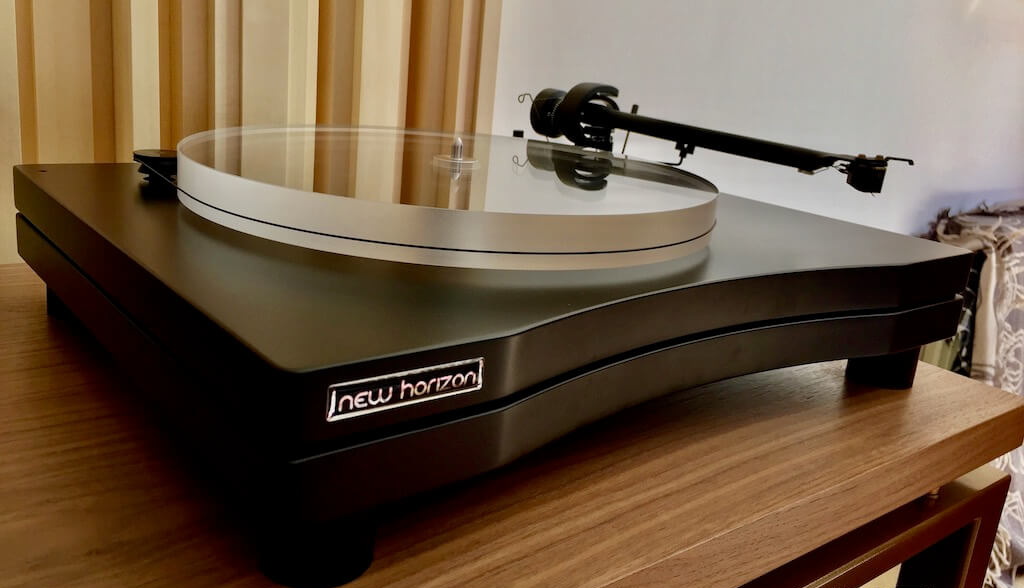
Slow Movement: Sand is the song that closes the album and is a window open to the world. The soundboard of the piano is felt to vibrate giving the body and setting the rhythm. The middle zone is exquisite and rich in harmonics and in the high middle a synthesizer shines, providing a lyric content.
How many times had I looked out at my double-zippered, quadruple-glazed balcony and wished there weren’t children cheering and screaming in the park across the street. Be careful what you wish for, said that crappy horror movie. Now, on the other hand, I want the screams, the balls, the mothers with their scolding, the thawed spring, life itself to return. Now I miss them even if we don’t go crazy because I know that as soon as the closing is over the naughty kids will take care of it. I will also miss this competent New Horizon GD 2.25 chainring and it just won’t go away so easily. An affordable turntable, sleek looks, smart design, and balanced sound.
But…
The turntable doesn’t get along very well with footprints. And that’s it. For this price it is impossible to get just one but more.

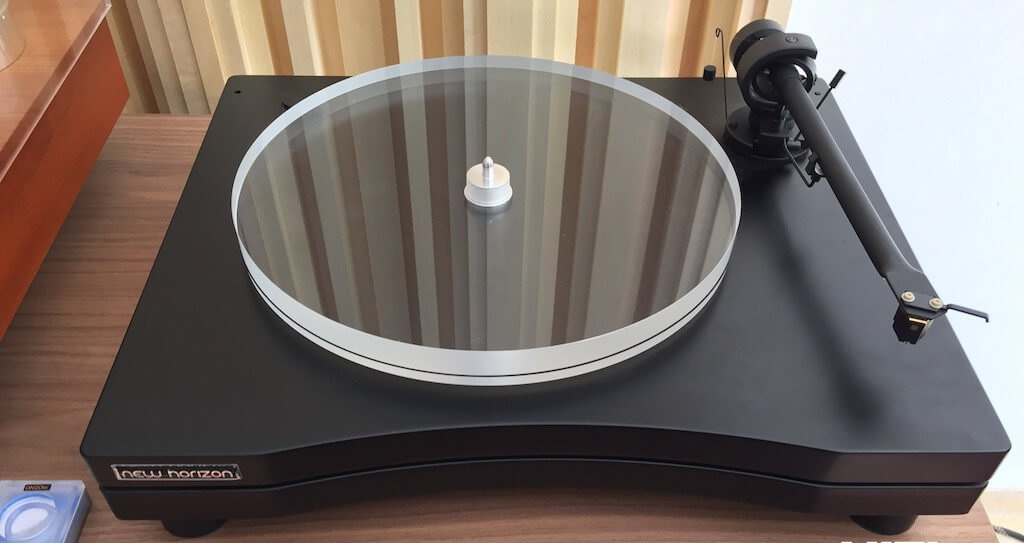


Add Comment